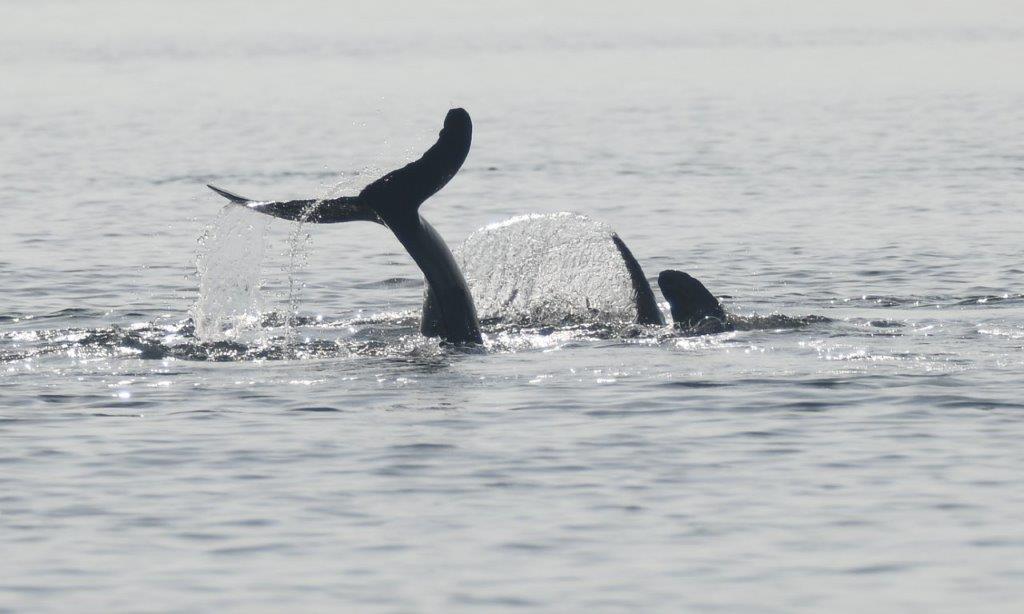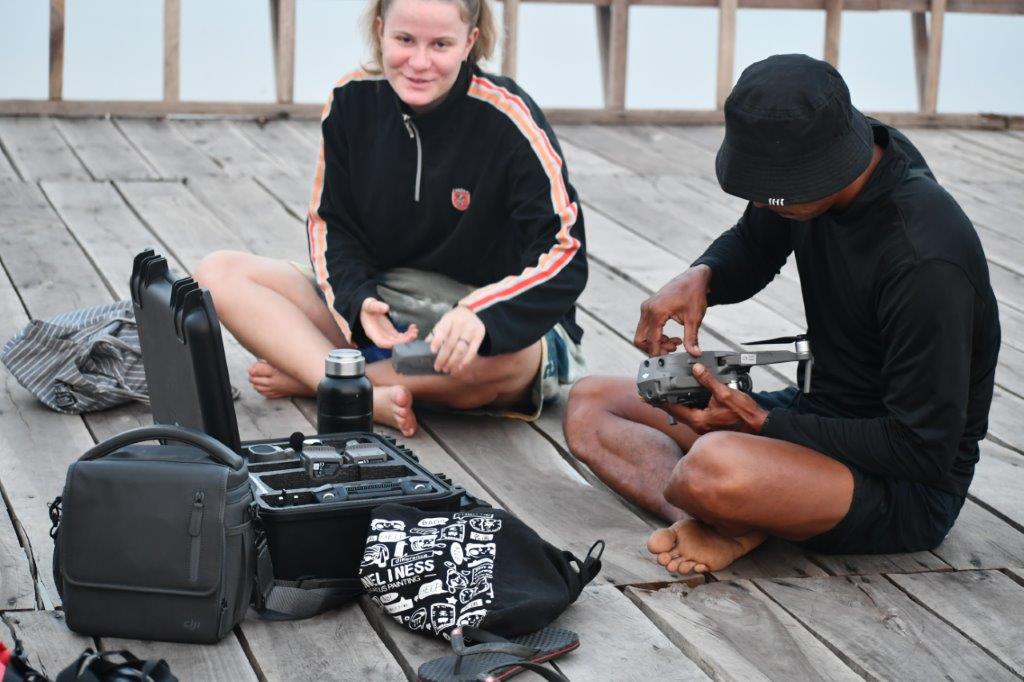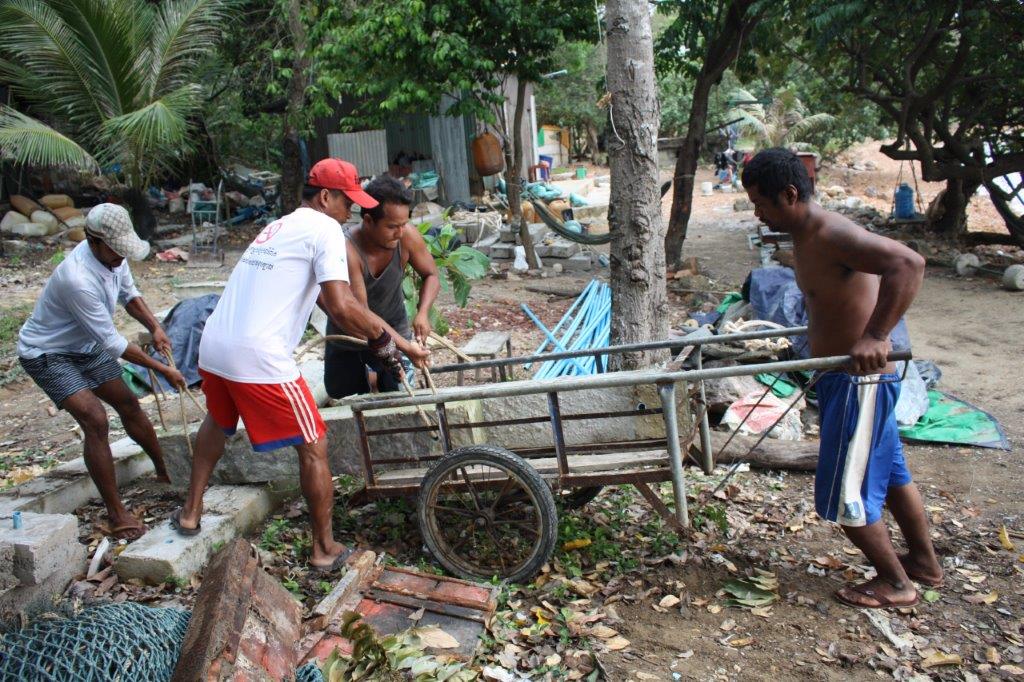Take Action
The use of destructive fishing practices is hard to regulate consistently. Cambodian NGO, Marine Conservation Cambodia has implemented a form of continual and passive enforcement which prevents bottom trawlers from fishing in the regulated fishing areas by the deployment of Fishery Production Structures. The impact of this work is being monitored by the NGO’s Monitoring program – the Cambodian Marine Mammal Conservation Project (CMMCP). This work supplies the local decision makers with policy orientated data and works with the local communities by raising awareness on the importance of these animals and including their valuable insight into their work. This protection has resulted in the return of key species to the area, and its monitoring will help to expand the area in which this conservation technique is used.
What are we fundraising for?
•Maintenance of land tower where marine surveys can be conducted low cost with binoculars form land.
•Boat surveys.
•Allowance for fishermen participating in monitoring program.
Why:
•Data collection for scientific research needed for policy change.
•Increased local knowledge on marine species and therefore ocean health.
Goal: €9.444,00
Donate nowSea the Work
Project budget
Yearly budget: € 32.585,16
Budget secured: 71.9 %
24%
Workforce
56%
Fieldwork
24%
Awarness & Outreach
Deep dive
Marine Conservation Cambodia (MCC), the executive NGO for the Cambodian Marine Mammal Conservation Program (CMMCP) was established in Koh Rong Samloem in 2008. They became well known for their proactive approach to conservation – taking matters into their own hands – chasing illegal fishing boats and confiscating illegal fishing material. MCC works with a mix of international and Cambodian conservationists. Over many years of forming a good relationship with the community and the local authorities, they have assisted in creating Cambodia’s first Marine Fisheries Management Area. The work has clearly demonstrated results as they have been invited to expand their work to the island of Kep.
Bottom trawling, a type of fishing technique that drags a net along the sea floor, devastated much of Cambodias coastal areas. This type of fishing is highly unselective and catches or uproots most marine life in its path. This has led to the serious decline of the seagrass habitat and consequently the animals that rely on it for their survival- some more than others. Dugongs are heavily reliant on seagrass as their main food source, abandoned the area and were rarely seen alive for the past 20 years. The Irrawaddy dolphin a very charismatic dolphin– would also experience increased stress and an negative impact on population health and possibly abundance. The lack of fish was also noticed by the local community, heavily reliant on fish as a source of income and food.
Despite the implementation of Marine Fisheries Management Areas, in which specific fishing techniques are restricted, some fishermen do not comply with the regulations. Unfortunately, resources to enforce the rules are limited. However, MCC is deploying low-cost and locally produced Fishery Production Structures (large blocks on the sea floor), which provide a passive form of continual enforcement by physically impeding bottom-trawl nets from passing through the area , while providing important nursery grounds for fish as well functioning as artificial reefs. You can learn more about these structures below in the Areas of Work.
In 2017 CMMCP was created to monitor the population of marine mammals in the coastal area Kep and Kampot to try to measure the status of the ecosystem and to understand which areas require protection the most. With this data they were able to proof the positive impact their Fishery Production Structures have had. Because of its success MCC was invited by many local communities to deploy more structures in neighboring provinces. This conservation technique finds major acceptance in the local communities as artisanal fishermen, who use legal fishing methods, are seeing an increase in their catch rates. The success of their work has been awarded the National Geographic Marine Protection Prize.
Importantly the CMMCP works with the local community by training local fishermen to record data when working offshore. This work has multiple benefits as as not only are the fishermen learning about the local residents of their water, but because it also expands their area of data collection and the number of eyes on the water.
The projects’ goal is expanding its area of work across all coastal Cambodia and grow their network of collaborating fishermen.






















